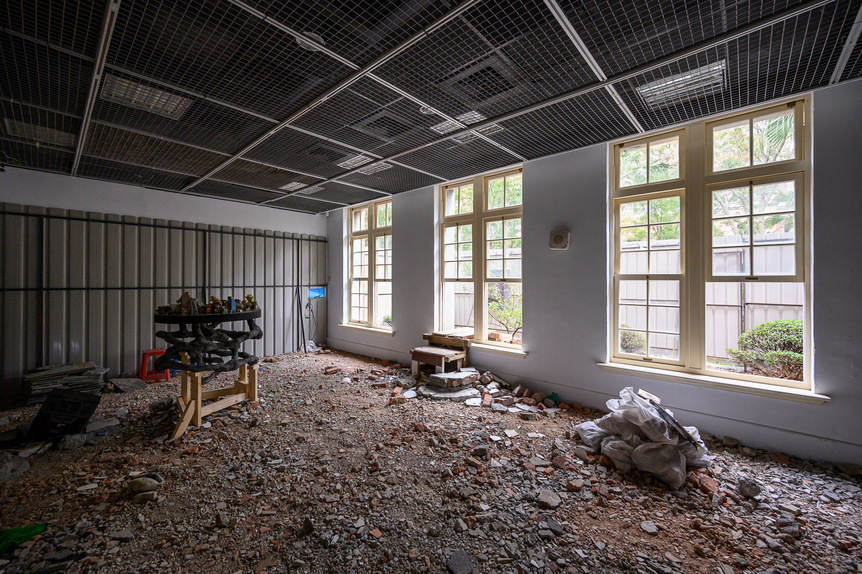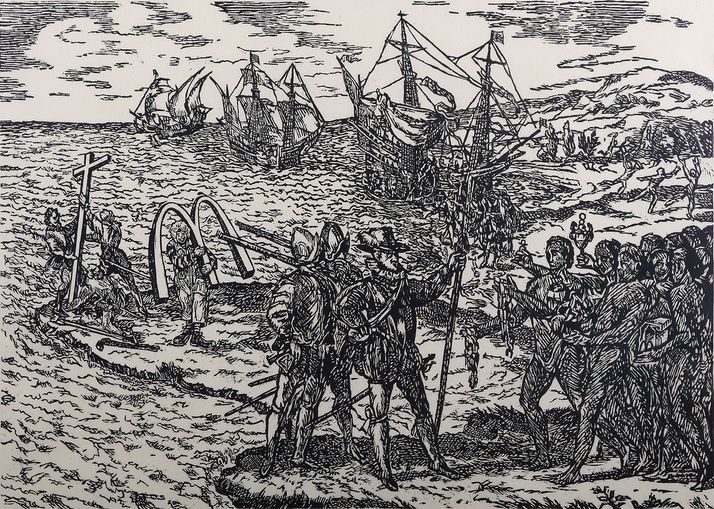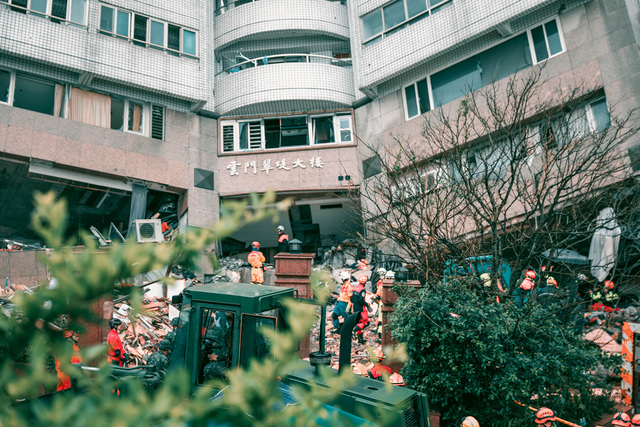-
From Current Issue
-
- Editor’s Letter Fire in the Heart
- Reviews I Gusti Ayu Kadek Murniasih
- Reviews 11th Seoul Mediacity Biennale: “One Escape at a Time”
- Dispatch Networked China
- One on One Monira Al Qadiri on Yukio Mishima
- Essays The rise of independent art spaces in pandemic-era Shanghai
- Features Tuan Andrew Nguyen
- Table of Contents
- Web Exclusives
- Archive
- Subscribe

R
E
V N
E
X
T
Installation view of CONCERN GROUP FOR HK ANTI-EXTRADITION BILL’s Lennon Ship, 2019, multimedia, 277 × 132 × 70 cm, at "Co/Inspiration in Catastrophes,” Museum of Contemporary Art (MOCA) Taipei, 2019. Courtesy the artists and MOCA Taipei.
Two unmoored boats flanked the entrance of the Museum of Contemporary Art Taipei. In the courtyard was a narrow, white boat plastered entirely with neon post-it notes, scrawled with rallying cries for Hong Kong’s struggle for democracy—a movement that started with mass demonstrations against a proposed extradition bill but evolved in response to police brutality and government intransigence. The boat’s single black sail was emblazoned with bold, white Cantonese calligraphy, translating to the popular protest slogan, “Liberate Hong Kong, Revolution of Our Times.” This Lennon Ship (2019) was collectively constructed by Taipei National University of the Arts students’ Concern Group for HK Anti-Extradition Bill.
The other boat, directly lodged on the museum steps, was a barely-intact, pale-blue sampan, with cracked splinters revealing its wooden inner structure. Found ashore in Nantian, Taiwan, in 2014, this ship was later identified as Fujimaru 7, a Japanese fishing boat displaced during the 2011 Tohoku Earthquake. Viewed together, the boats evoke unfinished journeys, a joint reminder of how disasters could lay waste to people’s carefully drawn plans.
Installation view of Sampan fishing boat (Registration Number MG3-44187, from Kesennuma-shi, Miyagi-ken, Japan), 746 × 185 × 61 cm, at “Co/Inspiration in Catastrophes,” MOCA Taipei, 2019. Courtesy MOCA Taipei.
The pair of boats introduced “Co/Inspiration in Catastrophe,” an exhibition of more than 30 works by 17 artists and collectives hailing from France, Japan, China, Taiwan, and Hong Kong. An examination of personal experience amid crisis, “Co/Inspiration” aimed to highlight both the before (systemic conditions) and the after (individual reactions) of large-scale disasters, ranging from earthquakes to war. Consisting primarily of videos, as well as installations, paintings, drawings and sound pieces, the exhibition, curated by Huang Chien-Hung and Yuki Pan, wove a compelling tapestry of individual voices confronting forces beyond their control.
On the first of two floors, viewers immediately encountered a dusty room of construction debris, as well as monitors and a trash-built sculpture. An ongoing project by the Japanese collective Chim↑Pom, Scrap and Build (2016–) mimics the Japanese government’s continuous cycle of destruction and renovation in preparation for the 2020 Tokyo Olympics. Screening footage of demolition sites on discarded electronics next to a garbage-laden sculpture of their taxidermy Pikachu Super Rat (2017)—referencing the hardy creature ravaging through Tokyo—Chim↑Pom’s immersive installation articulates the wasteful underbelly of the city’s constant revitalization motivated by globalized capitalism.
In addition to the Olympics, other global monoliths were scrutinized as agents of catastrophe. For instance, McDonald’s makes an appearance in stark black-on-white woodcut prints by Sachiko Kazama. McColoniald (New Continent Discovery) (2003) depicts an army of wealthy Western colonizers, replete with the golden arches as well as a Christian cross, storming indigenous lands as natives recoil in horror. The monochrome potency of Kazama’s imagery both resonates and contrasts with Eleng Luluan’s monumental, coiled black fabric cord sculptures, The Last Sigh before Gone (2016), created after Luluan’s hometown, the Taiwanese indigenous village of Kucapungane, was damaged by Typhoon Morakot. The thoughtful curation of these hyper-detailed works highlights how the historical oppression of indigenous communities continues through present natural disasters, many of which are worsened by wealthy countries’ outsized contributions to climate change.
The curators’ intricate connections across borders continued throughout both floors of the exhibition. On a wall in an interstice between room-sized installations, Lo Shih-Pin’s documentary The Post—quake (2019) projects hand-held footage from 2018 of the aftermath of the earthquake-collapsed Yun Men Tsui Ti Building in Hualien, Taiwan. The artist’s camera lingers on rescue workers, machinery, and bewildered citizens, whose dialogue she narrates in a melancholy and reflective voiceover. At the end of the rescue efforts, Lo states, “Though it was a relief for everyone, no one had joy.”
Lo’s quiet reflections of grief and collective loss echoed upstairs to Ai Weiwei’s Human Flow (2017), which captures the daily lives of refugees across 40 camps internationally. Despite the documentaries’ differences in scale and context, listening to individuals directly narrate their traumatic lived experiences created an uncanny sense of return and new possibilities for empathy. The exhibition’s ambitious scale and somber subject matter were deftly handled with works that interrupt the 24/7 news cycle with reflection and emotional processing, emphasizing the vulnerability of human survival.
“Co/Inspiration in Catastrophes” is on view at the Museum of Contemporary Art (MOCA) Taipei, until February 9, 2020.
To read more of ArtAsiaPacific’s articles, visit our Digital Library.

















